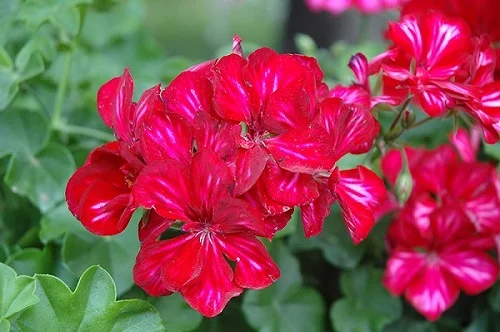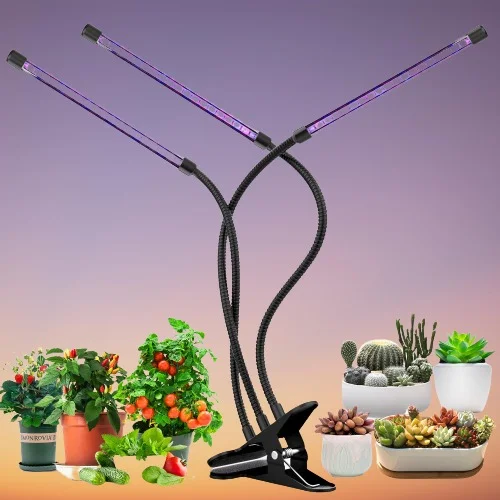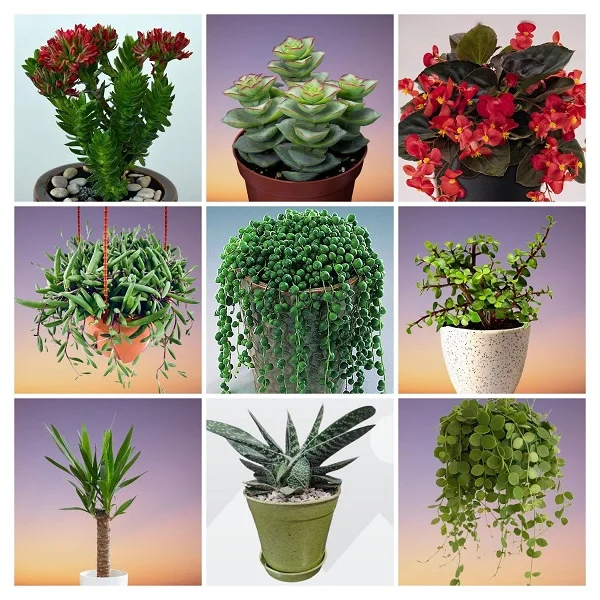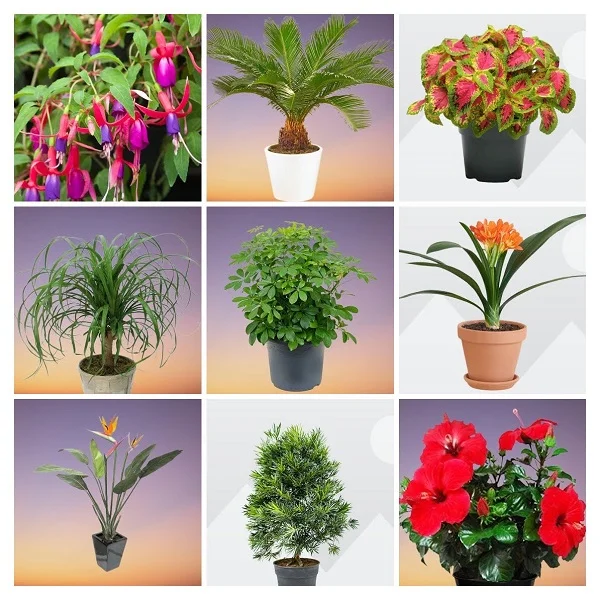Pelargonium peltatum (Ivy Geranium) Indoor Care, Propagation, Problems and Remedies
Some links in this post may be affiliate links
Pelargonium peltatum (Ivy Geranium) thrives in bright light to full sun, moderate warmth, average humidity and moderately moist, rich, well-drained soil coupled with fortnightly feeding in the growing season.
Ivy Geranium also called Ivy-leaved Pelargonium, Cascading Geranium or Trailing Geranium are perennial, scrambling, flowering plants bearing five shallowly or deeply lobed, circular to heart-shaped, glossy leaves and large, umbel-like inflorescences atop a long stalk.
Cascading Geranium bears trailing stems and large flowers which make this plant spectacular in a hanging basket, on a pedestal or up a trellis.
Ivy-leaved Pelargoniums are tender perennial plants which will not tolerate cold. They are not cold hardy, therefore, they are best grown as indoor plants in the cold temperate climates.
In climates with harsh winters, Ivy-leaved Pelargonium can be grown outdoors as container plants during spring and summer which are brought inside when the temperatures drop to about 100C in fall.

Botanical name: Pelargonium peltatum
Family: Geraniaceae
Common names: Ivy Geranium, Ivy-leaved Pelargonium, Cascading Geranium, Trailing Geranium
Origin
Pelargonium peltatum is native to Southern and Eastern South Africa.
Size
Ivy Geranium unlike Pelargonium x hortorum is a trailing plant which can grow upto 10 feet long when grown indoors placing it among the best flowering plants for hanging baskets.
Flowers
Trailing Geranium bears clusters of flowers which may be white, pink, lavender, purple, orange, salmon, red, burgundy, bicolored or patterned and appear in spring through fall. They occur in single, semi-double or double blooms.
Is Ivy Geranium toxic?
Yes. Ivy Geraniums are toxic to humans and pets as outlined by ASPCA. Keep the plants away from the reach of kids, cats, dogs and other pets.
Varieties
There are many hybrids and cultivars of Ivy Geranium which include;
'Galilee' with variegated leaves and rose-pink flowers,
'White Mesh' which bears green leaves with bright white veins,
'L'Elegante' with leaves edged in creamy white and a tinge of pink,
'Crocodile' has unique foliage with white veins,
'Rouletta' with red-and-white blooms,
'Mahogany' with bicolor red and white flowers,
'Mauve Beauty' with double flowers that look-like small rose blossoms.
Where to Buy
If you would like to acquire these spectacular plants, they are readily available online on Etsy (Link to Etsy).
How to care for Ivy Geranium indoors
To care for Ivy Geranium indoors, give it bright light to full sun, moderate warmth of 15-280C, average humidity of 50-55% and moderately moist, fertile, well-drained soil coupled with fortnightly feeding during the growing season.
Pelargonium peltatum care requires regular trimming of the branches to encourage branching and control growth. Repotting is only needed when the plant becomes potbound. Keep reading for more details on these growing conditions and how to achieve them.

Light Requirements
Where do you place Ivy Geranium?
Ivy Geranium grows best in bright light to full sun to promote flowering. A spot infront of a brightly-lit window with some 6-8 hours of morning or late afternoon sunlight is ideal for this plant.
If the light is not sufficient the plant will become leggy and will not flower. Therefore, where the natural light is not adequate, instal full spectrum grow lights to supplement it.
Regularly turn the pot to ensure the plant receives adequate light on all sides to promote even growth and prevent the plant from getting leggy.
You may move your Cascading Geranium outdoors in summer for some sun but acclimate it gradually to prevent scorching. Ensure to bring it back inside in fall when temperatures begin to drop, it can tolerate a temperature of 100C.
Watering
How often should you water Ivy Geranium?
Water Ivy Geranium thoroughly in spring and summer when the top 1-2 inches of soil dry out. Keep the soil consistently moist and avoid overwatering to prevent rotting, yellowing and leaf drop.
Decrease watering in fall and winter as growth is minimal at this time and maintain the soil slightly moist. Do not allow the soil to dry out completely to avoid wilting, drooping and leaf fall.
Use water that is at room temperature to prevent shock which can lead to stunted growth and leaf loss. Avoid chlorinated water to avoid brown leaf tips and edges.
Make sure that the pot has a drainage hole and drain excess water from the catch plate or saucer to prevent waterlogging which can result in root-rot and eventual death of the plant.
Temperature & Humidity
Pelargonium peltatum prefers average warmth of 15-280C. Keep it away from drafts coming from windy doors, drafty windows, air conditioning units, hot air vents and others to prevent temperature flactuations which can lead to reduced growth and leaf drop.
Ivy Geranium requires a humidity of 50-55% to thrive. Set the pot on a wet pebble tray or use a to increase humidity where the air is too dry to prevent brown leaf tips. Keep proper air flow to minimize fungal diseases.
Fertilizer
Feed Ivy Geranium with a phosphorus-rich, water-soluble fertilizer every 2 weeks in spring and summer to boost blooming and healthy growth of the plant.
Do not feed in fall and winter as growth is minimal at this time and feeding the plant at this time can lead to fertilizer burn and death of the plant.
Potting Soil
The best soil for Ivy Geranium should be rich in organic matter to provide the required nutrients and at a neutral to alkaline PH for the optimum growth of the plant.
Repotting
Repot Ivy Geranium at the beginning of spring, only when it becomes extremely pot-bound; it blooms best when slightly pot-bound. Do not repot a plant that is in flower as it can shorten the flowering period.
Repot the Ivy-leaved Pelargonium into a pot 1 size larger than the current one that has a drainage hole to prevent the soil from getting soggy to prevent root-rot. Take a look at these pots with drainage holes on Amazon.
Slip the plant out of its pot, shake off the old potting mix and trim the dead roots with clean and sterilized scissors.
Place the plant in the center of the new pot and refill with fresh, free-draining potting mix.
Wet the soil thoroughly until water comes out through the drainage hole, empty the saucer.
Place the plant infront of a brightly-lit window with some 6-8 hours of direct sunlight.
Pruning & Grooming
Pruning Ivy Geranium involves removal of dead leaves and flowers to keep the plant neat and discourage pests and diseases.
Pinch off the growing tips to encourage a bushy, compact growth and prevent the plant from getting unruly.
To control growth and size and encourage a more compact growth, cutback the stems after flowering. This will also promote blooming.
Regularly clean the leaves with a damp soft cloth to get rid of dust as well as discourage pest infestations.
Ivy Geranium Care Outdoors
Ivy Geraniums are tropical plants which require warm and humid conditions to thrive. They are not cold hardy, therefore, they are best grown as houseplants in the temperate climates.
Nonetheless, in climates with harsh winters, Ivy-leaved Pelargonium can be grown outdoors as container plants during spring and summer which are brought inside when the temperatures drop to about 100C in fall.
Trim the plant by 1/3 and place it in a cool place where it can receive bright light and reduce watering to keep the soil slightly moist but do not let it dry out completely.
Do not feed it at this time as growth is reduced. Ensure that there is good air circulation to prevent fungal infestations.
Once the temperatures warm up to 130C in spring, move the plant outdoors under bright sunlight but shield it from hot direct sunlight to prevent scorching.
Ensure that the soil remains consistently moist but not soggy by watering when the top 1-2 inches of soil feels dry and feed the plant every 2-3 weeks with a phosphorus-rich fertilizer to boost blooming.
Ivy Geranium Propagation
Ivy Geranium (Pelargonium peltatum) is propagated at the beginning of the growing season (spring) from stem cuttings.
Propagating Ivy Geranium from stem cuttings
- Take a 4-5 inches soft stem cuttings from a healthy plant.
- Strip off the lower leaves and dip the lower cut end in rooting powder to hasten rooting.
- Insert the lower cut end in moist, free-draining rooting mix while taking care not to brush off the rooting powder and firm the soil around the base of the cutting.
- Place the set up in a warm, brightly-lit spot away from direct sunlight to avoid cooking the cuttings.
- Maintain the soil moist through out until the new plants are well established.
- Allow the new plants to be well established before transplanting after which you can begin routine care.
How to grow Ivy Geranium from seeds
- Fill a seed tray with free-draining soil and moisten it slightly.
- Spread seeds evenly on the moist soil and cover lightly with some soil.
- Cover the set up with a plastic sheet to create a greenhouse effect.
- Place the set up in a warm, brightly-lit place away from direct sunshine to prevent scorching.
- Mmaintain the soil moist through out by light misting the soil surface until the seedlings are well established.
- When the seedlings have true leaves formed and are a reasonable size, transplant them into individual pots.
- Position the pots in a well-lit spot and maintain the soil moist until the new plants are well established after which you can begin normal routine care.

Ivy Geranium Problems & Solutions
Ivy Geranium (Pelargonium peltatum) problems are yellow leaves, leaf drop, leggy growth, lack of blooms, pests and diseases among others. Keep reading for more on these problems and how to fix them.
Yellow leaves
Some of the causes of yellow leaves on Ivy Geranium are inconsistent watering, soggy soil or too little light.
How to fix it
Inconsistent watering: Water when the top 1-2 inches of soil dry out but never allow the soil ball to dry out completely.
Soggy soil: Ensure that the pot has a drainage hole and that the soil is free-draining. Always empty the saucer after watering and never allow the plant to sit in soggy soil.
Too little light: Place the plant where it will receive bright light with 6-8 hours of morning or late afternoon direct sunlight or use a grow light if the natural lighting is too low.
Leaf drop
Leaf drop on Ivy Geranium is caused by incorrect watering, soggy soil or drafts.
How to fix it
Incorrect watering: Water when the top 1-2 inches of soil feel dry but do not let the soil dry out completely.
Soggy soil: Use a pot with a drainage hole and free-draining soil.
Drafts: Keep the plant away from drafts coming from AC units, heat sources, windy doors and others to maintain an average warmth of 15-280C.
Leggy growth
Leggy growth on Ivy Geranium is caused by too little light or nutrients deficiency.
How to fix it
Too little light: Place the plant in a brighter spot with bright light with 6-8 hours of direct sunlight or instal a grow light if the natural lighting is not sufficient.
Nutrients deficiency: Feed the plant with a phosphorus-rich, water-soluble fertilizer every 2 weeks in spring and summer.
Lack of blooms
Lack of blooms on Ivy Geranium is caused by lack of nutrients, lack of pruning or too little light.
How to fix it
Lack of nutrients: Fertilize the plant with a phosphorus-rich, water-soluble fertilizer every 2 weeks during the growing season (spring and summer).
Lack of pruning: Trim the branches by half after blooming to encourage growth of new branches as flowers are borne at the tips of new branches.
Too little light: Position the plant in a brightly-lit place where it will receive bright light with 6-8 hours of direct sunlight or use a grow light if the natural lighting is not enough.
Pests
The common pests in Ivy Geranium are thrips, mealybugs, fungus gnats and spidermites.
How to fix it
- Isolate the affected plant to prevent spread to the rest of the plants.
- Treat the infested plant with neem oil or insecticidal soap as recommended by the manufacturer.
- Keep the plant well pruned to improve air circulation to discourage the pests.
Disease
Ivy Geranium is prone to oedema disease which is prevalent in soggy soil. It is characterized by water-soaked, corky patches on the leaves.
How to fix it
- Remove and discard the badly affected leaves as they will not recover.
- Stop watering to keep the plant dry for some time to allow it recover.
- Ensure that the pot has a drainage hole and that the soil is well-draining.
- Move the plant to a well-lit spot to encourage proper water uptake.
You liked it? Share on social media.
Related Content
Amazon Associates Disclosure
Homeplantsguide.com is a participant in the Amazon Services LLC Associates Program, an affiliate advertising program designed to provide a means for sites to earn advertising fees by advertising and linking to amazon.com.





